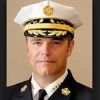Within the fire service, we constantly grapple with one question: What does it mean to be a leader? Clearly, we’re not alone in our search, which is why the leadership training industry brings in more than $100 billion worldwide.
Leadership is a constant subject of research, training, education and discussion — in every field of human endeavor. Depending on the source, there are dozens of recognized theories of leadership in the academic literatures of business administration, public administration and management science.
Go to any bookstore, or online bookseller, and search for the “leadership” section or keyword; there you’ll find thousands of books penned by people from all walks of life with their perspectives, tips, and techniques for exercising leadership, or becoming (or staying) a “leader”.
Attend almost any fire service conference, or professional development gathering in another industry, and you’ll likely find several presentations, tracks or panels on leadership.
You can select from myriad different survey instruments to assess your leadership “style,” spend thousands of dollars on leadership development programs, and even hire a leadership coach.
Whatever your favorite (social) media channel, it’s almost impossible to miss researchers, politicians, and pundits talking about leadership.
Life-and-death important
The significance of leaders is obvious — they set the tone and impact core values within an organization, for good or bad.
But in our business, it takes on another dimension. Leadership, at all levels, can make the difference between life and death — not just the lives of those we are sworn to protect, but also the lives of our brother and sister firefighters.
If your experiences are anything like mine, the presence, or absence, of leadership is palpable. It’s visceral; you can actually “feel” it when it’s there, and you miss it when it’s not. While leadership may be hard to define, as witness the many (often competing) theories on the topic, we generally think we “know it when we see it.”
From my own work as a firefighter, company officer, chief officer, state agency head, non-profit board member, academic researcher, instructor, consultant and business owner, I have certainly benefited from good leadership, and suffered (or so it felt at the time) through bad leadership. Sometimes the two types were indistinguishable, and even came from the same individual, group or organization at different times, or under different circumstances. Sometimes what I felt was good leadership, was seen by others as bad leadership, and vice versa.
With so much invested each year in leadership research, publishing and training, why haven’t we figured it out yet?
No “there” there
All the evidence suggests the worthwhile pursuit of leadership excellence is a never-ending journey. In short, it’s because there’s no “there” there.
If there was an easy 12-step program to develop leadership capacity throughout organizations, it would have been invented already. In fact, the more we discover about human behavior and interaction — and the more it changes with the diverse environmental, cultural, technical and political influences of an era where we are all connected, all the time — the less we actually know for certain.
We don’t need to look far to see some long-held leadership lessons reinforced over and over, while others are relegated to the “it seemed like (and may have been) a good idea at the time” bin of history.
Given the high stakes, all the attention and money directed at researching, defining and teaching leadership seems worthwhile. Still, it can be difficult, and at times frustrating, to sort through the many different perspectives on leadership.
So what can we do?
I certainly don’t have all the answers, but I do believe strongly in the ongoing practice of leadership and the value of introspection as we all pursue this never-ending journey, in both our professional and personal lives. If we do our job right, we might end up with more questions than answers, so please feel free to share your own thoughts and experiences.












